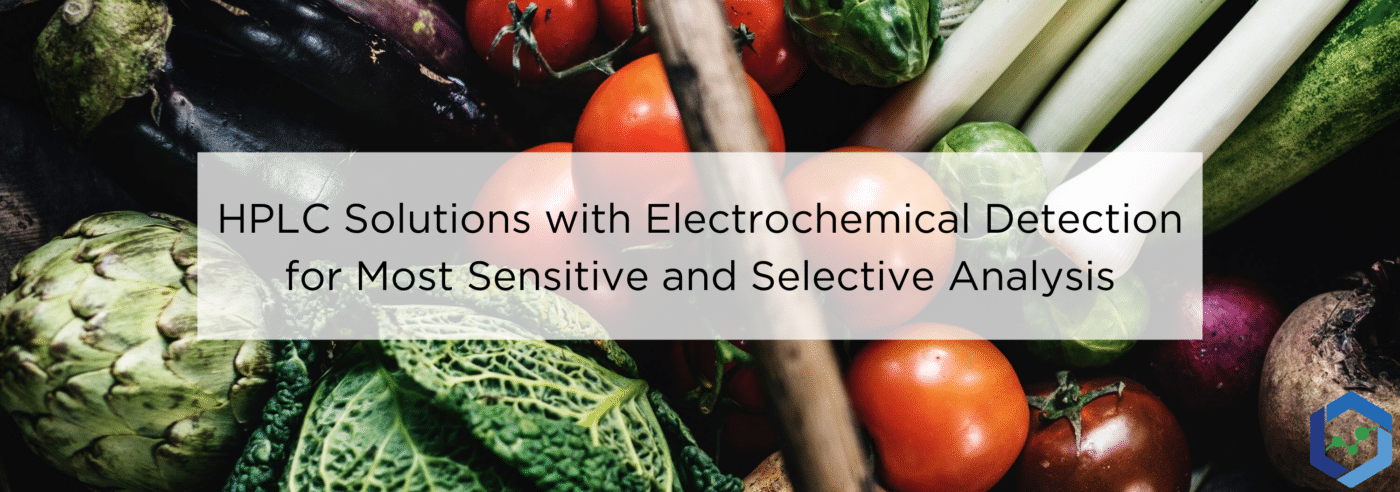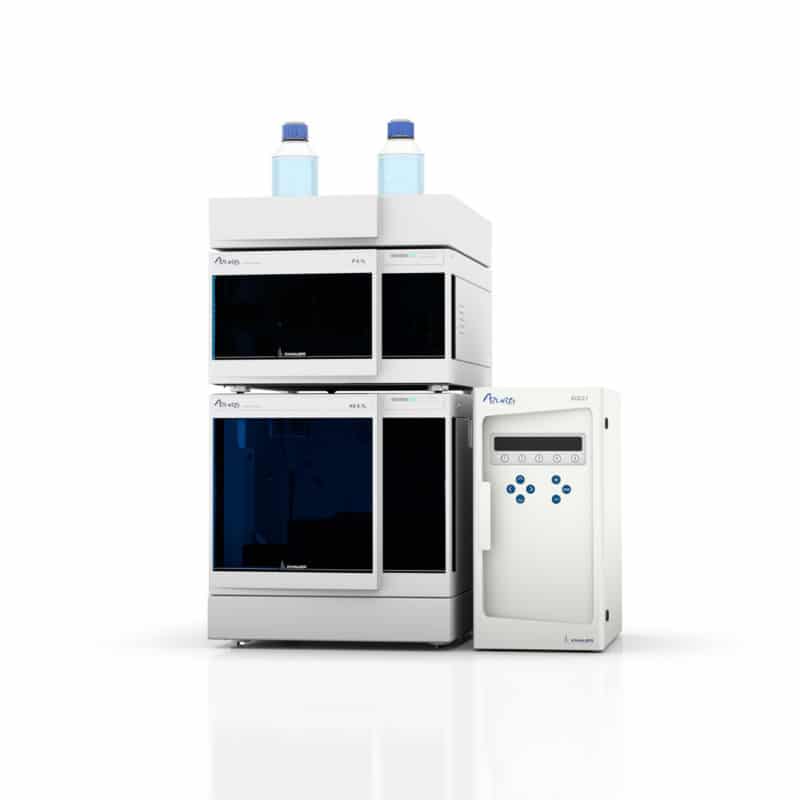No products in the cart.
HPLC, KNAUER, Science News
HPLC Solutions with Electrochemical Detection for Most Sensitive and Selective Analysis
Electrochemical detection in HPLC
Electrochemical detection (ECD) for HPLC or UHPLC is an extremely selective and sensitive detection technique that is applied in a number of analyses in the food industry. In combination with the proper electronics, ECD has an enormous linear dynamic range of more then 6 orders of magnitude. This means that concentrations as low as 50 pmol/L and as high as 100 µmol/L or more can be measured.
Detection principle
In amperometric electrochemical detection the electrical current is measured resulting from oxidation or reduction reactions. A sample is introduced into the HPLC and separated on the chromatographic column. The column is connected to an ECD cell, a tiny electrochemical reactor where a reaction takes place at an electrode. Electrochemically active substances that elute from the column undergo an electrochemical reaction, electrons are transferred resulting in an electrical current that is recorded.
High Performance Anion Exchange Chromatography (HPAEC) System
This dedicated system is specifically designed for the analysis of sugars and features a sensitive pulsed amperometric detector (PAD).
Carbohydrates are important in the manufacture of many foods, pharmaceuticals and biofuels. This dedicated system is specially designed to separate and analyze carbohydrates. The heart of this system is the AZURA ECD 2.1 electrochemical detector. This detector enables the detection of the smallest amounts of carbohydrates due to its extraordinary sensitivity and comes with an integrated column thermostat.
Advantages of electrochemical detection in food applications
Compared to HPLC methods applying UV or RI detectors, applications with electrochemical detection are far more sensitive.
- Save time: Measurement of low analyte levels without preconcentration of samples
- Save sample: Very low sample volume is required
- Save money: Elimination of matrix interferences by selective detection of analytes of interest without complex sample preparation.






